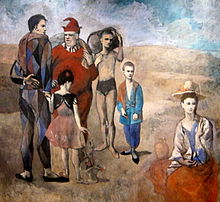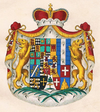Duino (Slovene: Devin, German: Tybein) is a town and castle at the Adriatic coast in the municipality (comune) of Duino-Aurisina, part of the region of Friuliâ€"Venezia Giulia in the province of Trieste, northeastern Italy.
Description

Until the 1950s, Duino was a predominantly Slovene-speaking village with a sizeable Italian-speaking minority. According to the last Austrian census of 1910, 63.5% of the inhabitants of the town were Slovenes and 25.1% were Italians (the rest were either German speakers or foreign citizens). The Italian census of 1921 confirmed the Slovene ethnic character of the town, and even showed an increase of the proportion of Slovene speaking population to 78.4% (mostly as the result of the emigration of Austrians and Germans residing in the town). During the years of the Free Territory of Trieste (1947â€"1954), however, its ethnic composition changed considerably, as many Istrian Italians fleeing from Yugoslavia settled in Duino. Nowadays, Duino is a predominantly Italian-speaking town, with a numerous Slovene-speaking minority. Most signs are written in both languages, and the municipality of Duino-Aurisina is an officially bilingual one.
Notable natives and residents include the Slovenian economist Ivan Ples (1886â€"1958), composer Andrej VolariÄ (1863â€"1895), and the Italian Jesuit philologist Gregorio Alasia de Sommaripa (1587â€"1626), who compiled the first Italian-Slovene dictionary in 1601.
Duino is noted for being the place where the physicist Ludwig Boltzmann committed suicide and for inspiring the poet Rainer Maria Rilke to write his Duino Elegies. It is also the place where the well-known Slovene folk legend Lepa Vida takes place.
Since 1982 the town has been home to UWC Adriatic, an international school attended by students from 80 different countries, and one of the 14 UWCs around the world.
History

The two Duino castles are the main attraction. The older castle, dating back to the 11th century and which belonged to the patriarchy of Aquileia, is in ruins, while the newer Duino Castle dates back to 1389, is inhabited to this day and can be visited by tourists.
Below the ruins of the ancient castle there lies a white rock projecting into the sea, the Dama Bianca, which resembles a veiled woman and gave origin to many gothic legends.
Gallery

See also

- Aurisina
- Sistiana
- County of Gorizia and Gradisca
- Austrian Riviera
References

External links
- Official Website of the Municipality Duino-Aurisina (Italian, Slovenian)
- Traveller's Guide to Duino and Sistiana
- Chamber of Commerce of Trieste - Duino-Aurisina
- United World College of the Adriatic - Duino

